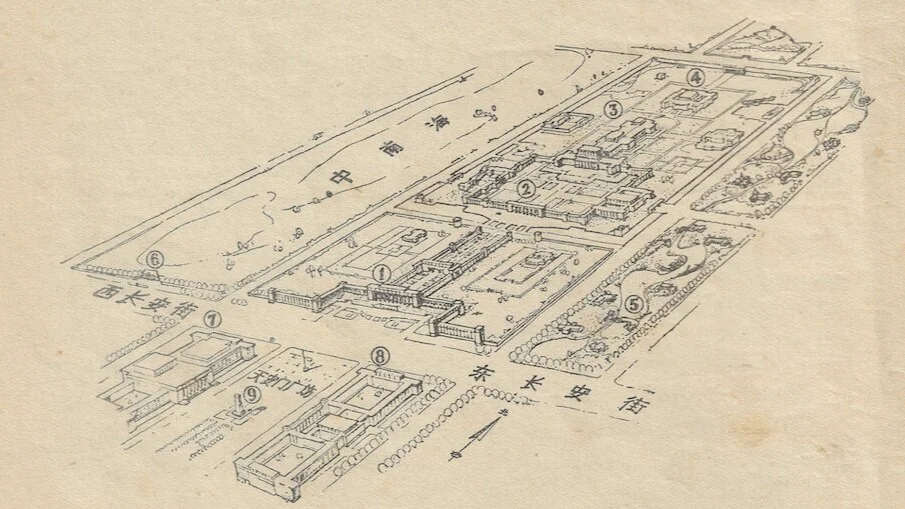In the 1950s The Forbidden City Was Inches from Destruction
Revolutionary City Planning, 1967
Mao Zedong never officially visited the Forbidden City. However, three times within the same week in 1953, he stood upon its wall. A common theory is that when he climbed atop the 500-year-old fortification he was discussing with other members of government and advisors what it would look like if the government’s main seat was built right where the Forbidden City is located today.
This story has been repeated many times in various publications, including Wang Jun’s excellent book《采访本上的城市》. However, until recently, we at Beijing Postcards could only speculate about the details of the discussions that took place regarding the future of the former Imperial residence. This changed when we collected a Cultural Revolution Magazine published by the city planning bureau of Beijing called 《城市规划革命》- The Revolutionary City Plan in 1967. The magazine criticizes in great detail the 1950s plans for the Forbidden City.
Proposed design of the Tiananmen gate as shown in Revolutionary City Planning, 1967
The article is called “The shady plan to Reconstruct the Forbidden City Exposed” and it is a typical Cultural Revolution smear. The tone is biased and the specific points no doubt distorted, but we still get a fascinating peek into the discussions that took place around the Forbidden City in the early years of Communist rule. In the magazine, a layout of the proposed plan for the Forbidden City is shown. In this drawing the Tiananmen Gate as we know it is gone. It has instead been replaced with a building in the same style as the Great Hall of the People. In fact, it makes it clear that the Great Hall of the People and the National Museum of China which stand in Tiananmen Square today were only one part of an even bigger plan, the rest of which was never completed.
The article is a direct attack on the former CCP leader Liu Shaoqi. The plan of placing the government inside the Forbidden City is seen as proof of Liu Shaoqi’s alleged scheming to overthrow Mao. Liu is mockingly portrayed as an emperor — according to The Revolutionary City Plan, he planned to take up office right where the old Imperial throne hall was, and still is today. This move would be justified by tumbling over the Imperial throne and installing a statue of a worker pointing a gun alongside it.
Liu Shaoqi mockingly portrayed as an emperor as shown in Revolutionary City Planning, 1967
In reality, none of of this happened — Liu Shaoqi was ousted and Zhou Enlai was able to protect the Forbidden City against the red guards by placing soldiers within the premises for a couple of years. The article in The Revolutionary City Plan however goes a long way to explain the strange limbo that the Forbidden City was left in for years after the Cultural Revolution. The Palace became the elephant in the room — even though it was one of the city’s biggest tourist attractions, the potential of the enormous palace was not really utilized, as the Cultural Revolution disputes surrounding its use were seen as too recent and too sensitive. However, in recent years, this has changed — the Palace has become a cornerstone in the search for a Chinese identity. But that is content for another article entirely!


